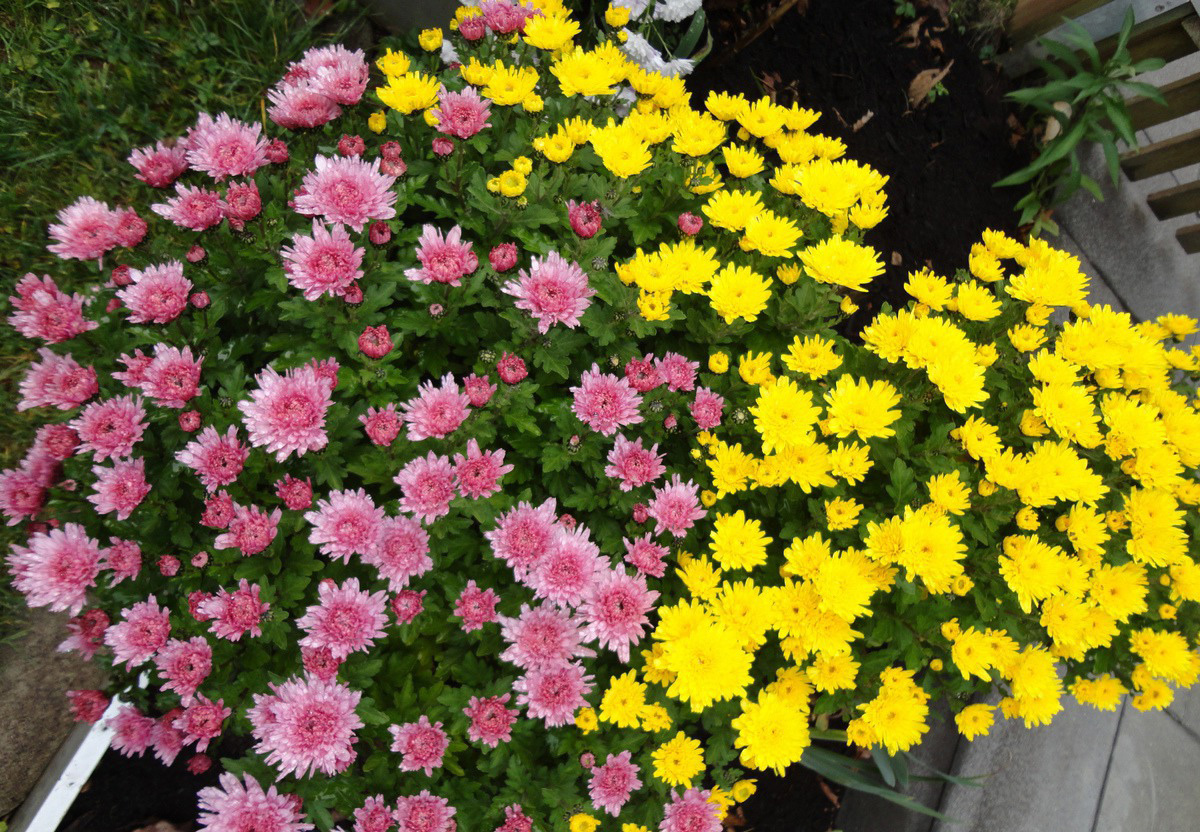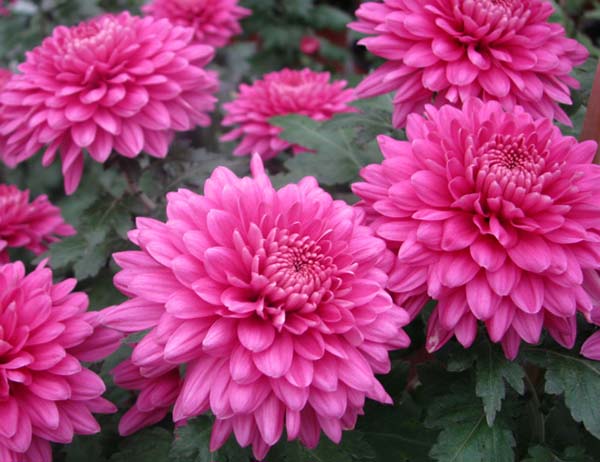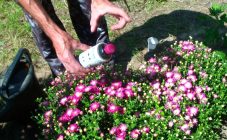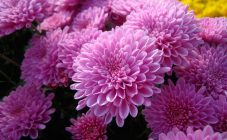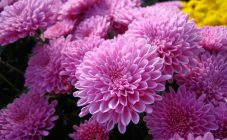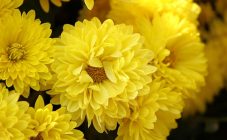Content:
The dwarf chrysanthemum delights human eyes and is one of the latest garden flowers. It grows not only on a personal plot, but also perfectly takes root as an indoor flower. It should be borne in mind that the pot will somewhat restrain her growth, but not her beauty. Small chrysanthemums bloom in the second half of August, and bloom with the appearance of significant frosts. The color palette is varied. Flower beds seem to bribe autumn, so that she, giving them warmth, allows them to bloom for as long as possible. Yellow, red and other colors are what you need to create a unique atmosphere.
Features of growing dwarf chrysanthemums
The rules for growing and caring for a dwarf chrysanthemum are simple. No special effort is required from the gardener - the plant is unpretentious, but it will add originality to the flower garden, and uniqueness to the bouquet.
Those who plan to grow home bush chrysanthemums in the garden can choose both dwarf varieties and taller flowers. It is impractical to grow tall miniature varieties of these plants at home: they will take up a lot of space, and they will not look very aesthetically pleasing. Indoors, it is acceptable to breed only low-growing chrysanthemums. Low-growing chrysanthemums are considered perennials.
Florists identify the most popular varieties:
- mulberry Chinese;
- mini-chrysanthemums Korean garden;
- indian.
The above varieties of perennial chrysanthemums are intended directly for indoor cultivation, but in the summer, if desired, they can also be planted in open ground, where they will get stronger. After the flowers with the first frost are transplanted back into the pot, they will bloom profusely until winter.
Chinese varieties
To date, the stores offer undersized chrysanthemums of Chinese varieties.
Among the characteristic features are:
- dark green leaves;
- the height of the bush during the growing season - from 17 to 65 cm;
- a variety of flower sizes;
- the presence of ampelous species.
Inflorescences in the form of baskets have long amazed the imagination with a rich color range, which is very diverse - there are plants of the same color and mixed, they form a large ball.
Korean undersized varieties
The most popular variety of Korean short chrysanthemums is Multiflora. Even when the flowers have not yet bloomed, a beautiful spherical plant cannot fail to attract admiring gaze. What can I say when the "ball" is covered with different-sized flowers!
The color range of Korean chrysanthemums is truly amazing. On the rights of the most valuable varieties, varieties with baskets of greenish and bluish color are marked, the garden small white chrysanthemum also attracts the eye.
Indian varieties
A distinctive feature of small chrysanthemums of Indian varieties is a small bush, a lighter shade of leaves than the above varieties. Indian varieties are sissies. Chrysanthemums of Indian varieties are acceptable to plant only in pots, to plant in open ground, even in summer, it is not recommended categorically - this will destroy them. Storage of seedlings is only warm.
Planting and caring for dwarf chrysanthemums
If you do not take into account the pampered Indian varieties, small chrysanthemums are grown both in pots and in the open field.Those whose choice fell on chrysanthemum should take note of some of the planting features, as well as the care of Multiflora chrysanthemum.
- Good lighting is key. A chrysanthemum bush, planted in a sunny place, will bloom earlier and the period of its budding will be long. In addition, planting in a sunny area excludes the growth of long shoots.
- To increase fertility, the soil is recommended to be mixed with humus or compost. Its lightness and friability are very important, but with these qualities the main thing is not to overdo it, otherwise the chrysanthemums will grow in height, but there will be few flowers and they will not differ in splendor.
- It is not recommended to plant chrysanthemums on sunny days; this is done only in cloudy weather. If we are talking about summer time, then this should be done early or in the evening. At first, a well-prepared hole is poured, after which drainage is laid in it and, finally, soil.
- Chrysanthemum does not fit deeply - its root system is superficial. The optimum hole depth is 40 cm.
- Following planting, the plant is pinched, during which the growth point is removed. And after 20 days, a second pinch is needed - you need to remove the shoot and two nodes. There is an opinion that one pinch is enough, the plant in any case will take the shape of a ball, since it's all about genetics. As they say, it's the master's business, but the second pinch won't be superfluous.
- The dwarf chrysanthemum first needs protection from the sun's rays. For this purpose, gardeners use non-woven fabrics that do not touch the leaves.
Watering flowers
Chrysanthemums react to a moisture deficit immediately, the stems become like wood. But a large amount of moisture will harm the chrysanthemum, the stems will rot. Therefore, it is necessary to determine the optimal amount of water and take into account the presence or absence of rain. While the plant is blooming, as well as during the dry season, it requires high-quality watering.
Flower propagation
Reproduction by roots is considered the most acceptable way for dwarf chrysanthemums. This is explained by the fact that when planting with seeds, the peculiarities inherent in the variety are not preserved. And after a few years, the bush will give out dense shoots, stop developing and, as a result, lose its aesthetic appeal, which means the need for renewal. The bush is ready for planting in spring, therefore, spring is the most suitable season for renewal.
If multiple shoots are needed, cuttings are acceptable. Even before flowering, the densest branches should be selected, cut off and placed in wet sand or settled water. The cuttings will take root in a few days. And then they can be transplanted into fertile land. This is how Multiflora multiplies; it must be transplanted in the summer or early autumn period. To take root well in the soil before the onset of temperature drops, this variety of chrysanthemum takes time. But flowers can also be prepared indoors, in flowerpots or pots.
Fertilizing and feeding
Dwarf chrysanthemums should not be overfed as it is safer to underfeed. A single top dressing in the spring is enough. Fertilize stunted chrysanthemum with mullein or humus.
Diseases and pests
Although chrysanthemum resists many diseases well, its immunity has limits. In some cases, the lower part of the stem is exposed, and the leaves may turn black. It's all the fault of powdery mildew, which appears from excess moisture, as well as if the bush is too thick or due to temperature differences.
But the main enemies of the chrysanthemum are caterpillars.Therefore, even at the stage of planning the cultivation of these flowers, it is necessary to acquire the appropriate preparations. And to prevent a caterpillar raid, the plant should be sprayed from time to time.
If you follow all the recommendations, a lush spectacular flowering will not keep you waiting.
